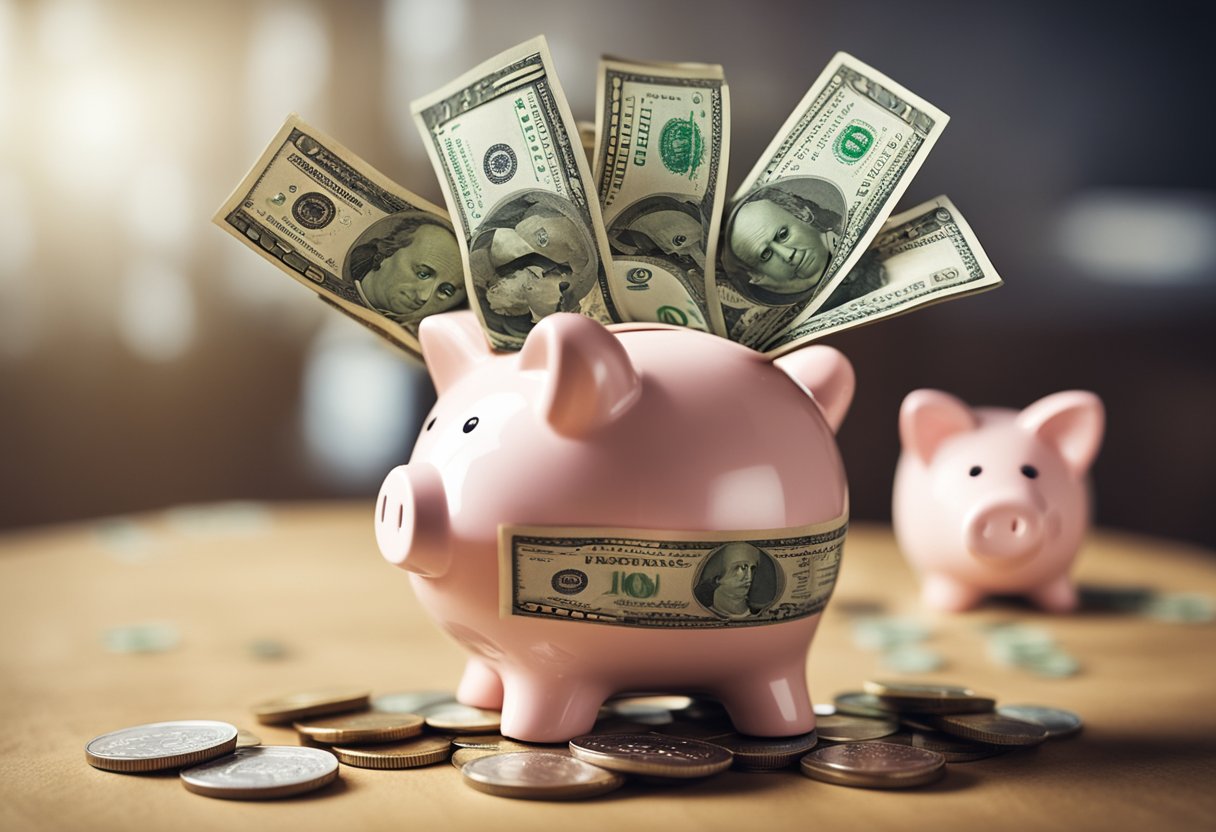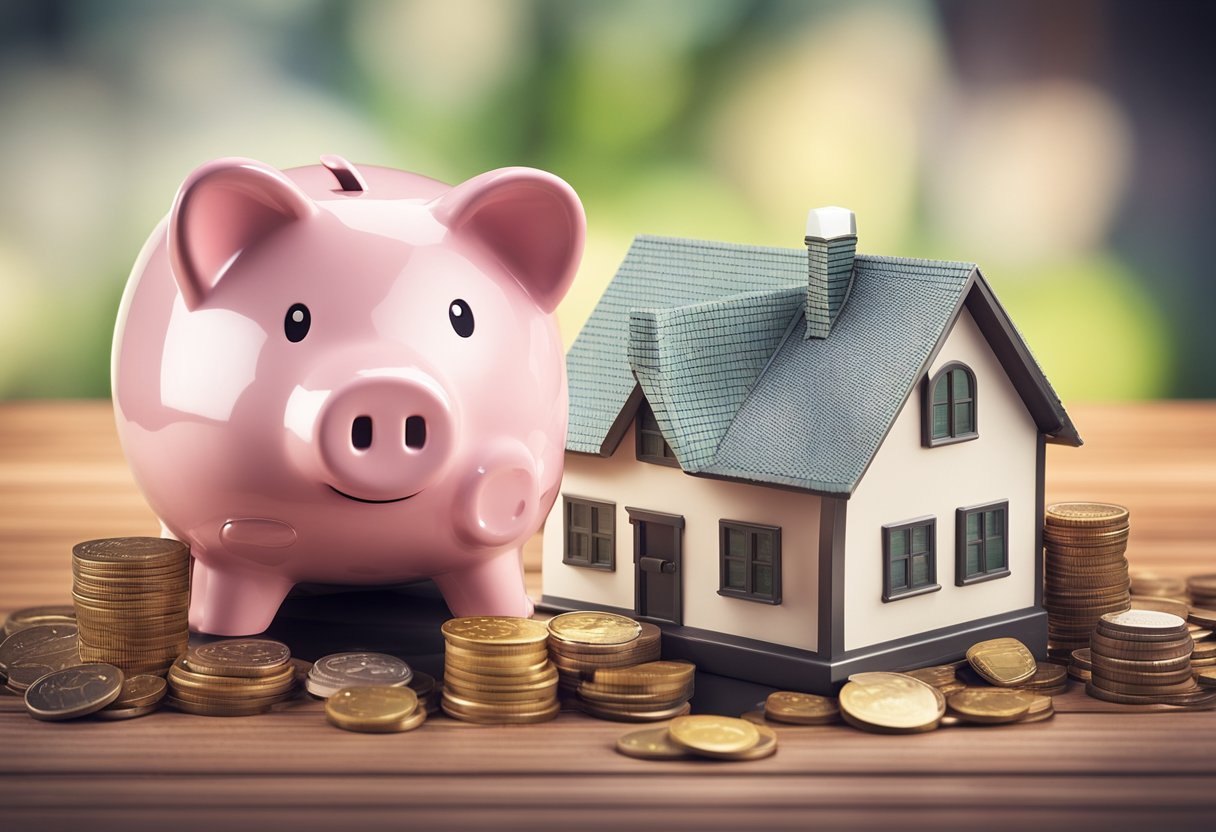
Saving for a Mortgage Down Payment: Simple Tips for Future Homeowners
Buying a home is an exciting milestone in life, but it also comes with significant financial responsibility. Saving for a down payment is often one of the most daunting tasks for prospective homeowners. However, with the right approach, you can turn the dream of homeownership into a reality.
Understanding the basics of a mortgage and determining your down payment needs are essential to creating an effective plan. By exploring saving strategies and additional resources, you can get closer to your goal and build a strong financial foundation for your future.
Reaching the finish line may include optimizing credit and debt management, creating additional income streams, and being financially prepared to take those final steps. These essential tips will help you navigate the path to homeownership with confidence and ease.
Key Takeaways from Saving for a Mortgage Down Payment
- Approach saving for a down payment with a clear understanding of mortgage basics and tailored strategies.
- Utilize available financial tools, resources, and assistance programs to make saving more manageable.
- Optimize your finances, explore additional income opportunities, and be financially prepared before making a down payment.
Understanding Mortgage Basics
Before diving into the process of saving for a mortgage down payment, it’s essential to understand some mortgage basics. Having a clear grasp of the types of mortgages available and the role of down payments will help you make informed decisions when it comes to buying a home.
Types of Mortgages
There are several types of mortgages to choose from, depending on your financial situation and preferences. Here’s a brief overview of some common mortgage options:
Conventional Mortgage: This mortgage is not backed by the government and is offered by private lenders. Borrowers need a good credit score and traditional down payment (typically 5%-20%) to qualify.
FHA Loan: A loan insured by the Federal Housing Administration, allowing borrowers with lower credit scores and down payments as low as 3.5% to qualify.
VA Loan: A mortgage guaranteed by the Department of Veterans Affairs, available to eligible veterans and active-duty military members. VA loans often require no down payment and have competitive interest rates.
USDA Loan: A loan backed by the United States Department of Agriculture, designed to help low-to-moderate-income borrowers in rural areas. These loans often require no down payment and have lenient credit requirements.
Jumbo Loan: A mortgage exceeding the conforming loan limits set by Fannie Mae and Freddie Mac. These loans are riskier for lenders and often require larger down payments and higher credit scores.
The Role of Down Payments
Down payments play a significant role in the mortgage process. They’re the upfront cash payment you make when purchasing a home, which reduces the amount borrowed from the lender.
Down payments affect the following aspects of your home-buying journey:
- Loan Terms: A larger down payment can help you qualify for a better interest rate, ultimately saving you money over the life of the loan.
- Private Mortgage Insurance (PMI): Putting down at least 20% on a conventional mortgage will help you avoid paying PMI, an additional monthly cost typically charged when your down payment is less than 20%.
- Equity: A larger down payment increases your initial equity in the property, providing you with a more substantial financial cushion if home values fluctuate.
With these basics in mind, it becomes easier to understand different mortgage options and evaluate the importance of saving for an adequate down payment.
Determining Your Down Payment Needs
Before diving into the home buying process, it’s crucial to determine your down payment needs. There are two main factors to consider: the minimum down payment requirements for your mortgage, and the advantages of making a larger down payment.
Minimum Down Payment Requirements
Conventional loans often have a minimum down payment requirement, which varies depending on the buyer’s situation and the type of loan. In general, expect to put down at least 3.5% to 5% of the home’s purchase price for a minimum down payment. However, some programs specifically cater to first-time home buyers or individuals with lower income and might require even smaller down payments. It’s important to research the loan options available to you and understand their specific requirements.
Keep in mind that putting down less than 20% of the home’s purchase price usually results in the need to pay private mortgage insurance (PMI). This insurance protects lenders in case a borrower defaults on the loan. The cost of PMI varies depending on the size of the down payment and the loan, but it can range from 0.3% to 1.5% of the original loan amount per year. You can ask your lender to cancel PMI when your mortgage balance reaches 80% of the home’s value.
Advantages of a Larger Down Payment
There are several benefits to making a larger down payment, often referred to as putting down 20% or more of the home’s purchase price. One major advantage is avoiding the need to pay PMI. Without the added cost of PMI, monthly mortgage payments will typically be lower, which can save you money over the life of the loan.
A larger down payment also means you’ll start with more equity in your home. Equity is the difference between the home’s value and the amount owed on the mortgage. Having more equity can make it easier to refinance your mortgage or borrow against your home in the future, if necessary.
In addition, putting down a larger down payment can give you more negotiating power when bidding on a home. Sellers might perceive a buyer with a larger down payment as more serious and financially stable. This can be especially helpful in competitive housing markets where multiple offers are common.
To start saving for a down payment, first determine how much you’ll need based on your desired property and loan type. If you’re unsure how to calculate this amount, consult a financial professional or check out online resources like this down payment guide for helpful tips.
Exploring Down Payment Assistance

Grants and Loans
When saving for a mortgage down payment, it’s worth looking into grants and loans as they can provide essential financial assistance. Various federal agencies, state governments, and non-profit organizations offer these forms of support to eligible homebuyers.
- Federal Housing Administration (FHA) loans: These loans typically require lower down payments compared to conventional loans. FHA loans let borrowers with lower credit scores qualify by using relaxed credit requirements compared to conventional loans.
- VA loans: Offered to veterans and active duty military members, these loans require no down payment and no mortgage insurance.
- USDA loans: Aimed at people living in rural areas, they require no down payment and often carry lower interest rates than conventional loans.
Down Payment Assistance Programs
Several down payment assistance programs exist to help prospective homebuyers achieve their homeownership goals. These programs may provide grants, interest-free loans, or even low-interest loans to cover the down payment and closing costs. Here are some examples of assistance programs you might consider:
- State and local programs: Many states and local governments have their own down payment assistance programs that provide grants or loans to eligible residents, often catering to first-time homebuyers or those with low to moderate incomes.
- Non-profit organizations: Some non-profit organizations offer financial support to qualified individuals for down payments and closing costs.
- Employer programs: Select employers, often governmental or public service organizations, offer down payment assistance as an employee benefit.
When exploring down payment assistance options, make sure to research the eligibility requirements, applications processes, and potential restrictions on the use of funds. Additionally, consult with a qualified financial advisor or housing counselor to ensure you choose the most appropriate program for your specific needs.
Effective Saving Strategies

When it comes to saving for a mortgage down payment, having a solid strategy in place can make all the difference. In this section, we’ll explore a few effective methods for reaching your goal, including budgeting and using high-yield savings accounts.
Budgeting for Your Goal
The first step in saving for a down payment is to create a realistic budget. Start by listing all your monthly income sources and expenses. Next, identify any unnecessary expenses you can either cut back on or eliminate altogether. Consider alternatives such as cooking at home instead of dining out, or shopping smart by comparing prices and looking for sales.
Once you’ve identified potential savings opportunities, set a monthly savings goal. You can track your progress with savings apps, spreadsheets, or even good old pen and paper. Remember to revisit your budget regularly and adjust it when your financial situation changes. For more tips, check out how to save for a down payment.
Using High-Yield Saving Accounts
Another essential part of your saving strategy should be leveraging high-yield savings accounts. Regular savings accounts often provide minimal interest, but high-yield accounts typically offer higher rates. These accounts can help you grow your savings faster, and many of them are available through online banks.
In addition to high-yield savings accounts, you can also explore other interest-bearing accounts such as certificate of deposits (CDs) and money market accounts. Keep in mind, though, that CDs usually require a longer commitment and money market accounts may come with higher minimum balance requirements.
As you save for your down payment, don’t forget to maintain an emergency fund. Having a separate account for unexpected expenses can prevent you from dipping into your down payment savings. For more ideas on how to save for a house, take a look at these tips.
By implementing these strategies and keeping an eye on your progress, you’ll be well on your way to saving for a mortgage down payment. Remember, the key is to stay consistent and keep adjusting your approach as needed.
Additional Considerations for Saving

Calculating Future Expenses
When saving for a mortgage down payment, it’s essential to consider future expenses related to homeownership. This can help ensure a smooth transition into your new home without any financial hiccups.
- Home maintenance and repairs: As a homeowner, it’s crucial to budget for regular maintenance, such as cleaning gutters, fixing leaks, and keeping appliances in good working order. Additionally, homeowners should set aside funds for unexpected repair costs, like a broken furnace or water damage.
- Moving costs: Moving into a new home comes with its own set of expenses, which can range from hiring professional movers to purchasing moving supplies. Make sure to factor these costs into your overall savings plan.
- Tax implications: Owning a home can provide tax benefits, such as the mortgage interest deduction or property tax deductions. Keep these in mind when reviewing your overall financial plan. Plus, if you receive a tax refund, consider allocating it towards your mortgage down payment.
| Expense Category | Considerations |
|---|---|
| Home Maintenance | Regular upkeep, unexpected repairs |
| Moving Costs | Movers, moving supplies |
| Tax Implications | Deductions, potential refund to allocate towards savings |
Adjusting Timeframes and Expectations
While saving for your mortgage down payment, it’s important to remain realistic and flexible with your expectations, as well as timeframes. In some cases, potential homeowners may need to adjust their savings plan to account for additional expenses or unpredictable life events.
- If the cost of home maintenance and repairs is higher than initially anticipated, you may need to reevaluate your spending habits and savings goals.
- If it takes longer than expected to save the amount needed for a down payment, consider finding a temporary or alternative housing solution, allowing you to continue saving until you’re ready to make the move.
- Remember that everyone’s financial situation is different, and what works for one person may not work for another. Stay committed to your goals but be willing to modify your plan as needed.
Taking time to think through these additional considerations can help ensure a smooth journey towards homeownership. Achieving your financial goals, like saving for a mortgage down payment, involves careful planning and a realistic understanding of your financial situation.
Financial Tools and Resources

Down Payment Calculators
When saving for a mortgage down payment, down payment calculators can be a helpful resource for figuring out how much you need to save. These calculators take into account factors like the home price, your desired mortgage rate, and the length of the loan. Some popular down payment calculators include:
- NerdWallet’s down payment calculator
- MortgageCalculator.org
- Fannie Mae and Freddie Mac calculators
By utilizing these calculators, homebuyers can better understand their financial goals and develop a saving plan that works best for them.
Online Budgeting Tools
In addition to down payment calculators, another great way to stay on track with saving for a mortgage down payment is by using online budgeting tools. These tools can help homebuyers monitor their spending, set savings goals, and plan for the future. Some popular online budgeting tools include:
- Mint
- YNAB (You Need a Budget)
- EveryDollar
By taking advantage of these online budgeting tools, potential homebuyers can be more efficient in managing their finances and make saving for a mortgage down payment a simpler process. Remember that everyone’s financial situation is different, so don’t be afraid to customize your budgeting plan to accommodate your unique needs.
Optimizing Credit and Debt
Improving Your Credit Score
To make the dream of homeownership a reality, it’s essential to improve your credit score. A higher credit score can lead to more attractive loan offers, with better interest rates and lower monthly payments.
Start by checking your credit report for any inconsistencies or errors. If you find any, take the time to dispute them and have them removed. Next, focus on implementing healthy financial habits:
- Pay bills on time: This may seem obvious, but it’s essential in showing lenders that you’re responsible with money.
- Don’t max out credit cards: Keep your credit utilization ratio (the amount of credit you’re using compared to your credit limit) below 30% to demonstrate responsible borrowing.
- Limit new credit inquiries: Each hard inquiry on your credit can temporarily lower your score. Refrain from applying for new credit unless necessary.
Managing Existing Debts
Lowering your debt-to-income (DTI) ratio can help increase your chances of qualifying for a mortgage. Lenders often prefer a DTI below 43% for conventional mortgages. To achieve this, follow these tips:
- Organize your debts: Create a table listing all your debts, their interest rates, and monthly payments. This will give you a clear picture of your financial situation.
- Prioritize high-interest debts: Focus on paying down debts with the highest interest rates first, as they cost you more over time. This is known as the avalanche method.
- Consider debt consolidation: By consolidating multiple high-interest debts into a single loan with a lower interest rate, you may save on interest and potentially lower your monthly payment.
- Avoid unnecessary spending: Limiting your expenses and focusing on paying down debt can make a huge difference in your ability to save for a mortgage down payment.
Remember, optimizing your credit and debt can lead to more favorable loan terms, making it easier to save for a mortgage down payment. By diligently working on these aspects, you’ll be one step closer to owning your dream home.
Creating Additional Income Streams
Pursuing Side Hustles
In today’s gig economy, pursuing a side hustle can be an effective way to increase your income and save for that mortgage down payment. For many, this means taking on freelance or part-time work in addition to their full-time job. Some popular side hustles include:
- Freelance writing or graphic design
- Rideshare driving (e.g., Uber or Lyft)
- Selling handmade products on online marketplaces (e.g., Etsy)
The key to a successful side hustle is finding something you enjoy and can do consistently. Not only will this bring in extra income, but it could potentially lead to a raise in your full-time job as well, further increasing your savings potential.
Utilizing Investment Returns
Investing your money can be another way to create additional income streams. By investing in assets like stocks and bonds or even a 401(k), you can potentially see returns that can be used to grow your down payment fund.
For example, if you have a 401(k) through your employer, consider increasing your contributions to take advantage of any available company match. This reward can help grow your retirement savings, some of which may be accessible for first-time home buyers through programs like the First-Time Homebuyer Loan or even certain 401(k) withdrawal options.
Another option is to invest in the stock market directly or through low-cost exchange-traded funds (ETFs). This allows you to potentially grow your money over time, although it’s important to remember that investing always carries some level of risk.
Here’s a summary of the investment-related options:
| Investment Option | Potential Benefit |
|---|---|
| 401(k) | Grow retirement savings, company match, first-time homebuyer access |
| Stock market | Grow money over time, diversification through ETFs |
Overall, combining the extra income from side hustles with the potential returns from various investments can help you save for that mortgage down payment faster. Keep in mind, it’s important to find the right balance between focusing on your long-term goals and your short-term needs, making sure that you aren’t putting too much pressure on your current finances.
Final Steps Before Making the Down Payment
Choosing a Location and Home Type
In this exciting phase of the home-buying journey, it’s time to decide on a location and home type that suits your needs and preferences. Consider factors such as safety, amenities, and proximity to schools or workplace. It’s crucial to research the local market and consult with real estate professionals for insights.
When choosing the home type, evaluate whether a single-family home, a condo, or a townhouse aligns with your budget and lifestyle. The National Association of Realtors provides valuable resources and guidance for first-time homebuyers, which can assist in making an informed decision.
Navigating the Closing Process
As you approach the finish line, it’s essential to understand the closing process. Closing costs typically range from 2% to 5% of the purchase price and include expenses such as an origination fee, appraisal fee, and title insurance. Here’s a breakdown of common closing costs:
- Origination fee: This covers the lender’s administrative costs, typically 0.5% to 1% of the loan amount.
- Appraisal fee: An appraiser will assess the value of the property to ensure it meets the loan criteria. The fee ranges from $300 to $600.
- Title insurance: This protects both the lender and the buyer from title issues and usually costs between $500 and $1,000.
Review the final closing documents and ensure that all fees, loan terms, and other details match your understanding. Consult with your real estate agent or attorney for guidance if you encounter any discrepancies or have concerns.
In conclusion, the journey to buy a house involves a few essential steps. By carefully selecting a location and home type as well as navigating the closing process, you’ll soon be on your way to owning your dream home.
Luxury Specialist at McGraw Realtors
With a diverse background, including a career as an Air Force fighter pilot and entrepreneurship, Bill transitioned to real estate in 1995. Co-founding Paradigm Realty with his wife, Charlene, he quickly rose to prominence in Oklahoma City’s luxury real estate scene. Now, as one of the top agents with annual sales surpassing $20 million, Bill’s dedication to exceptional service remains unparalleled. With a legacy spanning over two decades in the industry, Bill’s expertise and commitment make him a trusted name in luxury real estate.